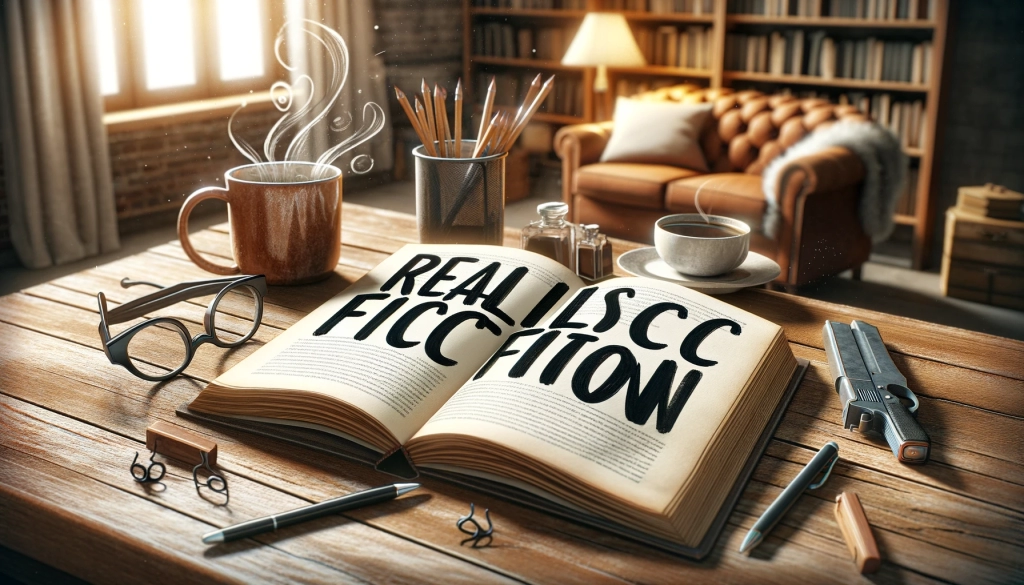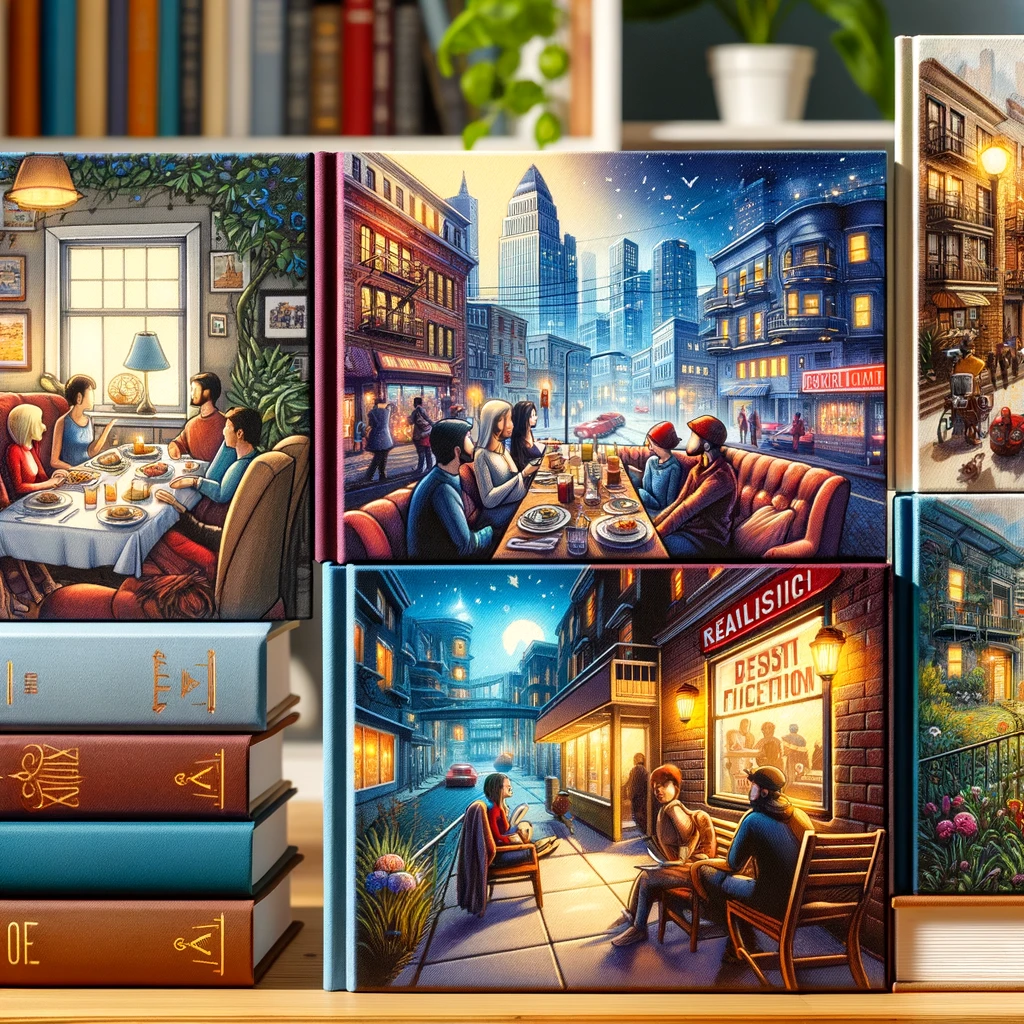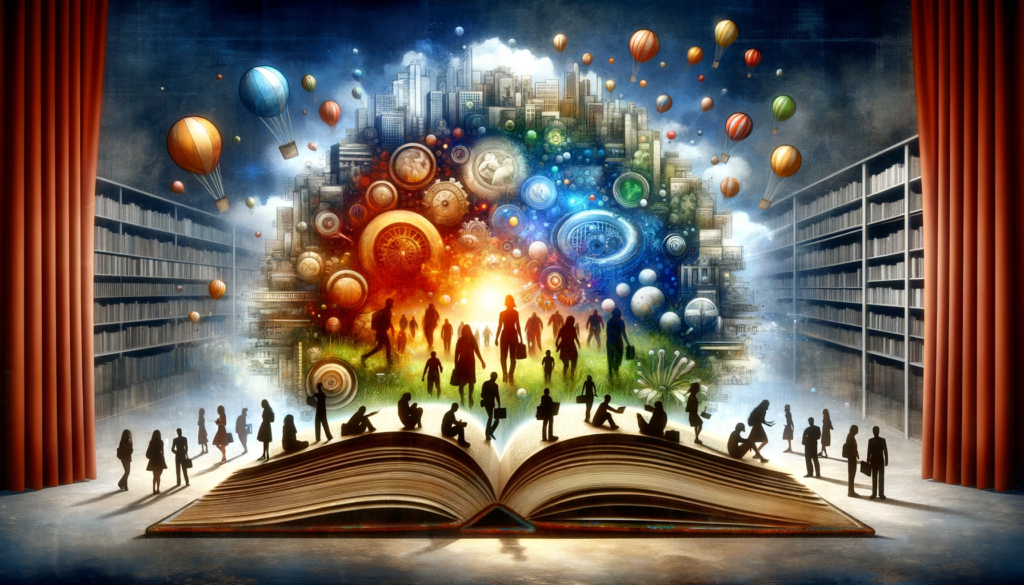At Thisthatproduction, we define realistic fiction as a genre where authors blur boundaries between fact and fantasy to create a realistically captivating word dance that mirrors life.
Realistic fiction books make a name for themselves in literature thanks to their relatable stories and likeable characters.
Whether you’re an author interested in composing realistic fiction stories or a book lover curious to know more about the realistic fiction genre to finalize a purchase decision, this article will educate you on what makes these novels so thrilling and realistic.
Who knows? You may be elated and compelled to check our fresh realistic fiction books within our varied book catalogue right after dissecting this article 😉
Table of Contents
Realistic Fiction General Definition

According to McQuade LibGuides: Realistic Fiction: Home, realistic fiction is a genre that portrays realistic characters, settings, and narratives. It mirrors the complexities and nuances of real life, transporting readers into a world that feels familiar yet intriguingly different from an average person.
Now you know the exact definition of a realistic fiction book, its time you know their various types to decipher the category you’d love to look into.
Types of Realistic Fiction Books

A fact-checked study conducted by language humanities categorized realistic fiction into contemporary and histiorical fiction:
- Contemporary Fiction: Involves narratives of modern living that capture the pleasures and difficulties of the day. Contemporary fiction is the category where we have sub-genres such as drama, crime, adventure and romance. You get to observe characters develop and change as they frequently go from innocence to experience.
An example of a realistic fiction book portraying modern real-life scenarios is ”Human Collateral” by Thisthatproduction- a crime-based fiction book depicting trafficked children from a single mother struggling to make ends meet.
- Historical Fiction: Includes narratives that authentically depict historical eras when fact and fiction collide.
An example of a historical fiction book is ”Sparrow” by James Hyne- a maturing read about the end of the Roman empire.
Speaking of types, it’s essential you know what makes realistic fiction books what they’re, so you can easily spot out golden reads on your next book hunt.
Realistic Fiction Characteristics

No matter the type of realistic fiction book you fancy, every great read you’ll encounter ought to possess the following characteristics;
- Logical Personas: Stories that introduce the main character to people who are just like them despite their shortcomings and strengths.
- Detailed Settings: Locations designed to replicate the real world and make you feel entirely in-tune to reality.
- Plausible Plots: Narratives with the potential to affect anyone at any time in real life.
- Emotional Depth: Characters ride a rollercoaster of “real life” emotions as they deal with the highs and lows of life.
- Social Relevance: Stories that speak on contemporary social issues and provide a perspective on our culture.
Concluding on social relevance, here are some examples of realistic fiction books that perfectly possess the above characteristics.
Realistic Fiction Examples
- “Back Porch Secrets” by This That Productions: A book that depicts the tragedy of losing a loved one to a drunk motorist, followed by a strong-hold to retain mental and physical sanity.
- “The Fault in Our Stars” by John Green: A deeply moving and insightful exploration of love and mortality through the lives of young cancer patients.
- . “Ruby’s Diner” by This That Productions: A story of how a trafficked teen found redemption through the guidance of a mother-like figure with a heart of gold.
- “The Great Gatsby” by F. Scott Fitzgerald: A critique of the American Dream.
- “Human Collateral” by This That Productions: A book that portrays deceit and betrayal of the bond shared between an illicit working mother, and an undercover cop.
Now you’ve grasped some golden nuggets to grab inspiration as an author or get yourself some entertaining books to pass the weekend, here are some clever story ideas we’ve put together to inspire you more and improve your tastes for quality books.
Realistic Fiction Story Ideas

- Life in a Tiny Town: A story on the complex daily lives of people living in rural areas or small towns.
- The Immigrant Experience: Examine the difficulties and victories of adjusting to a foreign society.
- High School Drama: Emphasize on the stormy domain of first loves and teenage turmoil.
- Business Ladder Climbing: Accompany the goals and disappointments of a young professional venturing into entrepreneurship as a broke high schooler.
- Family Secrets: Learn and educate about the intricate dynamics and depths of family bonds and best practices to raise a healthy household.
We’ve covered every essential detail about the realistic fiction genre, from types to characteristics to examples & ideas. Find out the impact of realistic fiction on literature and society to fully understand the genre from a broader (societal) viewpoint.
Realistic Fiction’s Impact on Literature and Society

- Enhanced Empathy: Encourages readers to comprehend more and empathize with various life circumstances.
- Cultural Reflection: Provides a glimpse into several eras while reflecting societal and cultural changes.
- Inspires transformation: Frequently prompts introspection on both a social and personal level, which may result in societal change.
- Educational Value: Provides a means of acquiring knowledge about existence’s social, historical, and psychological facets.
- Literary Evolution: Impacts the growth and change of literary themes and styles.
Conclusion
To sum up, realistic fiction books hold a special place in the literary world. They entertain, educate, and connect us to the broader human experience.
Whether you’re a fan of intricate historical narratives or contemporary tales, a realistic fiction book awaits you in its vividly real world in form of windows into lives and experiences, both different and similar to ours, offering a rich tapestry of the human condition and everyday living.
FAQs on Realistic Fiction Books
Who Created Realistic Fiction?
Realistic fiction developed naturally over the centuries. While it’s tedious to pinpoint a single originator, writers like Jane Austen and Charles Dickens in the early 19th century played important roles in shaping the genre by focusing on everyday living and relatable circumstances within their storytelling.
Why Do Authors Write Realistic Fiction?
Realistic fiction writers want to reflect life’s complexities and establish a bond with their audience. This genre frequently leaves readers feeling more empathetic and knowledgeable by exploring nuanced human connections, societal challenges, and complicated emotions.
Is Realistic Fiction Opposed to Fiction?
Not at all! Realistic fiction is a sub genre of fiction. The main distinction is that, although other fiction genres may contain magical or supernatural aspects, realistic fiction adheres strictly to the rules of reality and logic.
Can Realistic Fiction Be Written in the First Person?
Of course! An effective technique in realistic literature is the first-person narration. Putting readers in the protagonist’s shoes makes for a close-knit and engaging reading experience.
References
McQuade LibGuides: Realistic Fiction: Home. (n.d.). https://libguides.merrimack.edu/RealisticFiction#:~:text=REALISTIC%20FICTION%20is%20a%20genre,react%20similarly%20to%20real%20people.
Choosing High Quality Children’s Literature/Realistic Fiction – Wikibooks, open books for an open world. (n.d.). https://en.wikibooks.org/wiki/Choosing_High_Quality_Children%27s_Literature/Realistic_Fiction#:~:text=Realistic%20Fiction%20is%20divided%20into,or%20in%20the%20recent%20past.
Lo, H. “What Are the Different Types of Realistic Fiction?” Language Humanities, 11 Nov. 2023, www.languagehumanities.org/what-are-the-different-types-of-realistic-fiction.htm.

